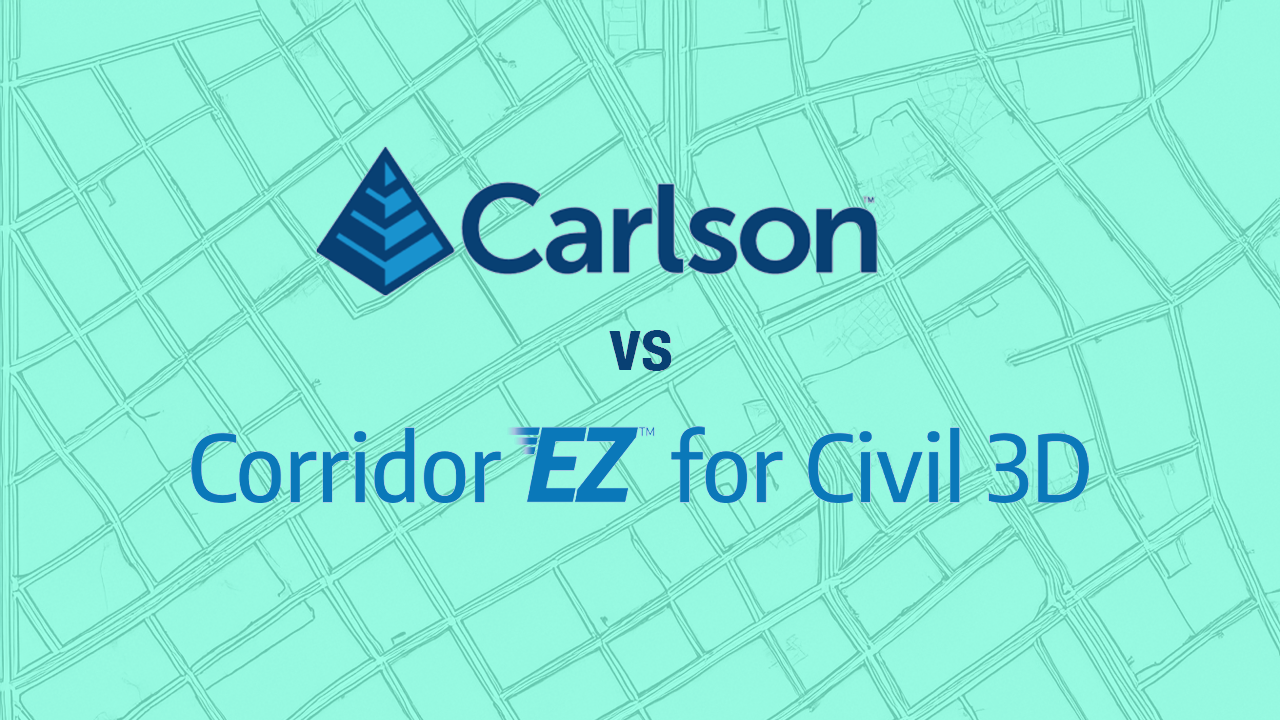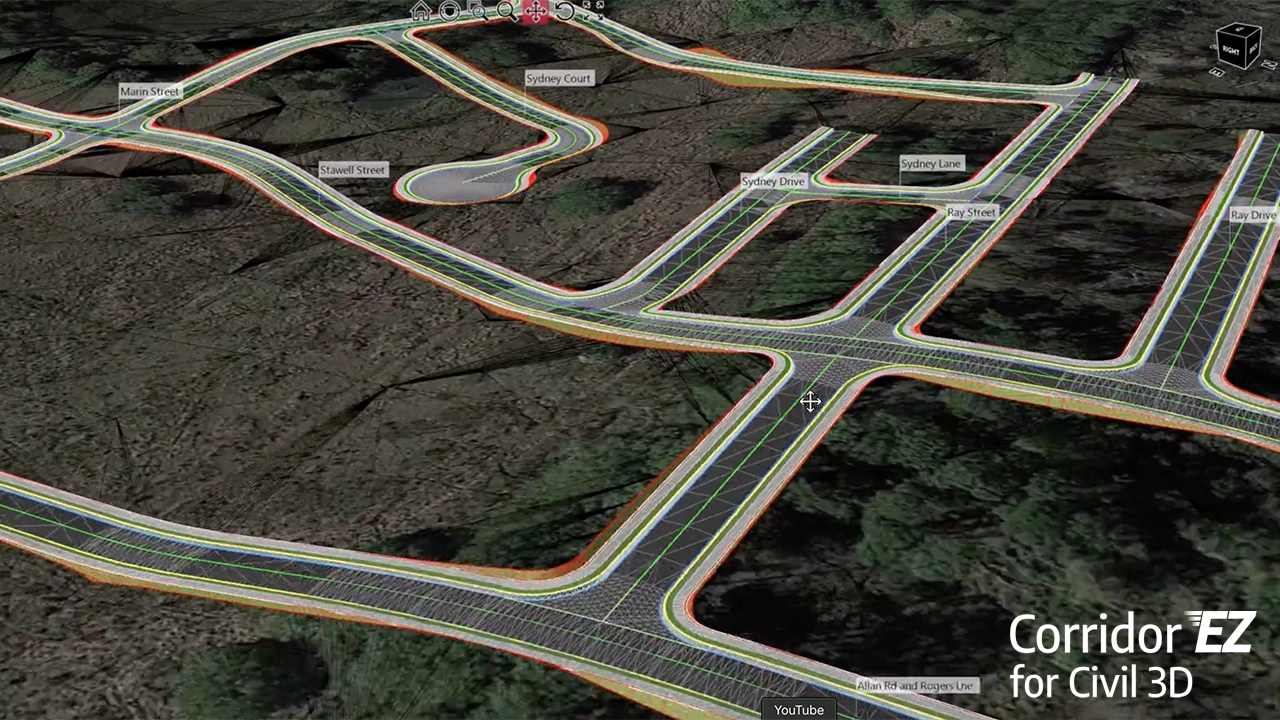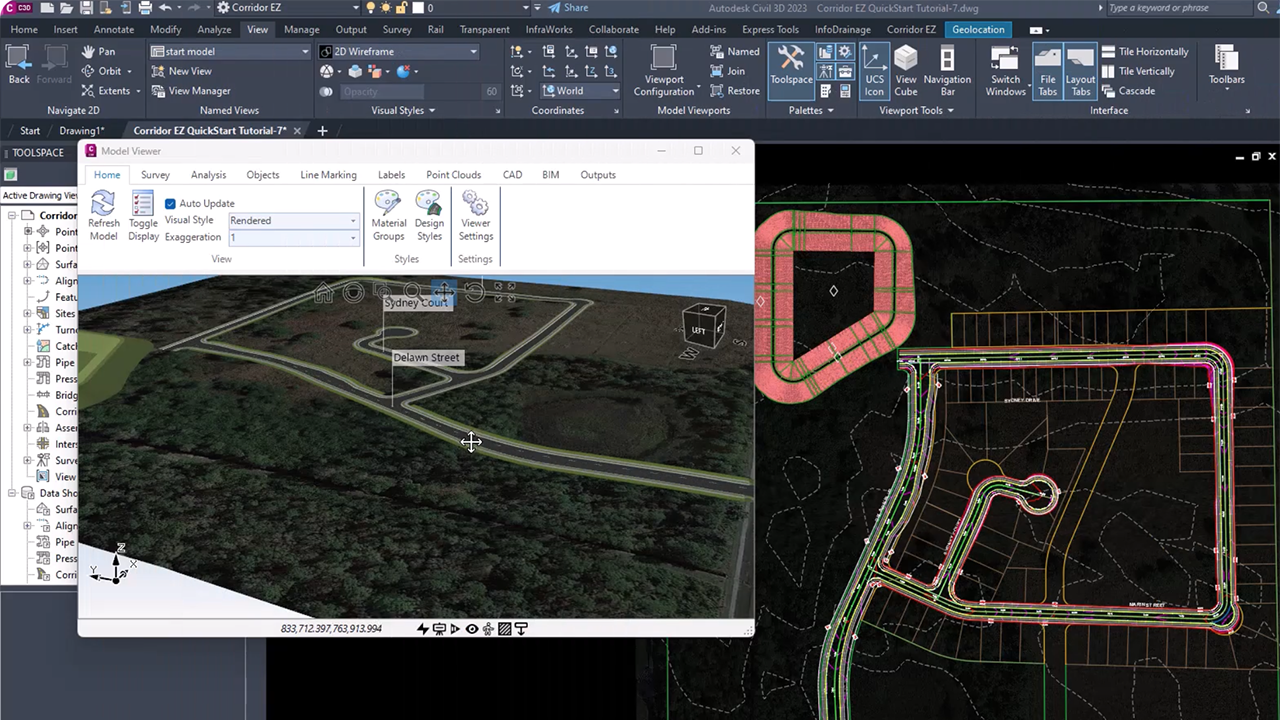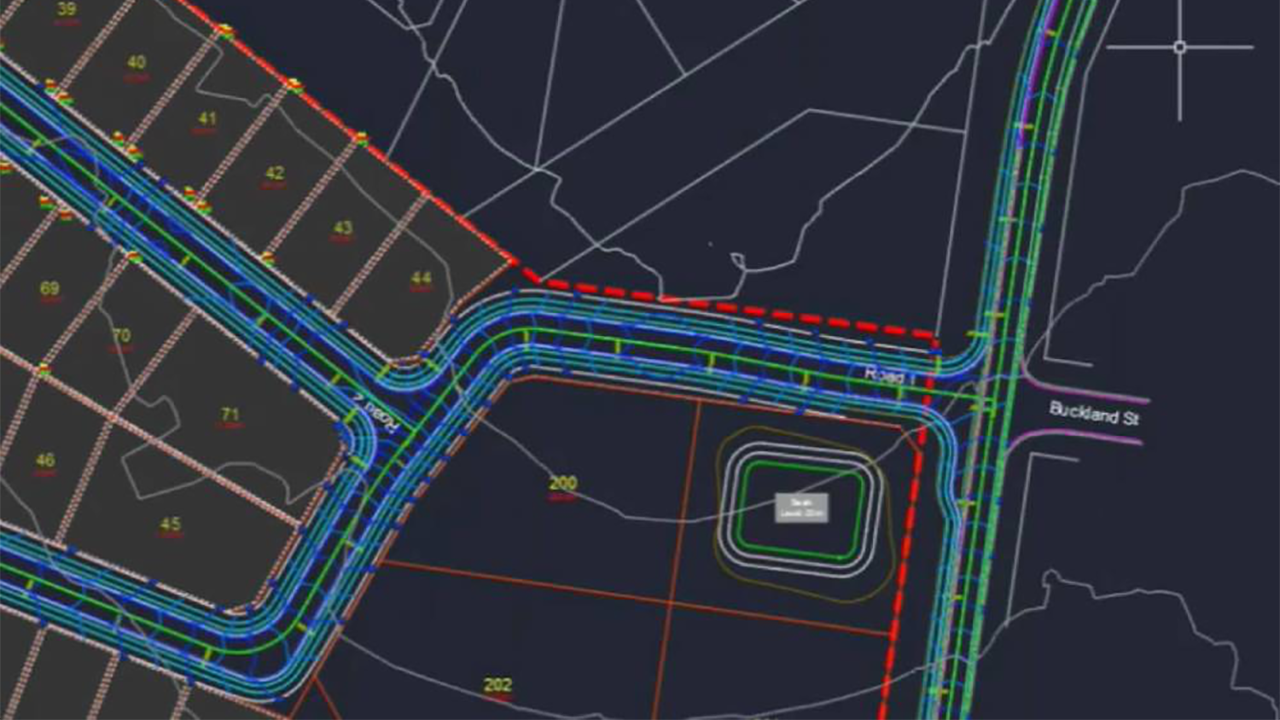When it comes to road and subdivision design, engineers often look to Carlson Software as an alternative to Autodesk Civil 3D’s native corridor tools.
Carlson is a standalone platform with its own drafting, design, and modeling environment, offering roadway design modules, cross-section tools, and earthwork calculations. It’s particularly popular in surveying and land development firms that want a single software ecosystem outside of Autodesk.
Corridor EZ for Civil 3D, on the other hand, isn’t a replacement for Civil 3D—it’s an add-on that supercharges it. If you’re already working in Civil 3D, Corridor EZ automates the creation of complex, multi-region corridors directly inside your existing project. The app builds assemblies, applies target mapping, and sets parameter overrides in minutes—tasks that can otherwise take hours or days.

Key differences:
• Platform: Carlson is its own environment; Corridor EZ works inside Civil 3D.
• Learning Curve: Carlson requires learning a new interface and workflows. Corridor EZ keeps you in the Civil 3D environment you already know.
• Automation: Corridor EZ focuses on automating corridor setup—something neither Civil 3D alone nor Carlson fully streamlines.
• Adoption Impact: Switching to Carlson may mean retraining your entire team; adding Corridor EZ means accelerating your existing process.
Who should choose what?
If your firm is looking to move entirely away from Autodesk products, Carlson offers a comprehensive alternative. But if your team is already invested in Civil 3D and wants to cut design time while improving consistency, Corridor EZ is a faster, lower-risk upgrade.
Summary
Carlson is a platform shift. Corridor EZ is a performance boost. The right choice depends on whether you’re replacing your design environment—or making the one you have dramatically more efficient.




